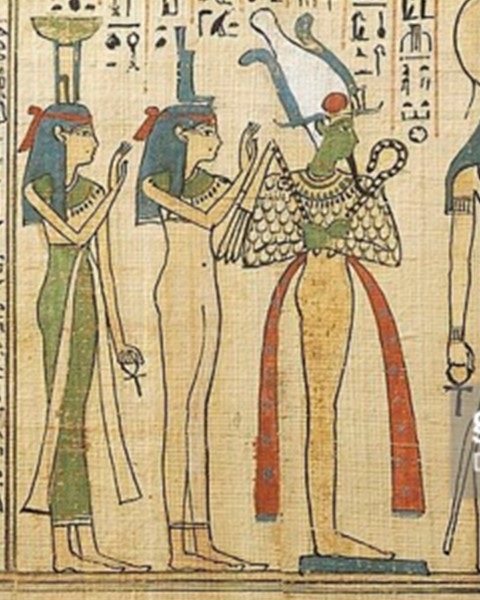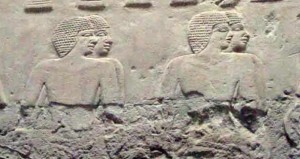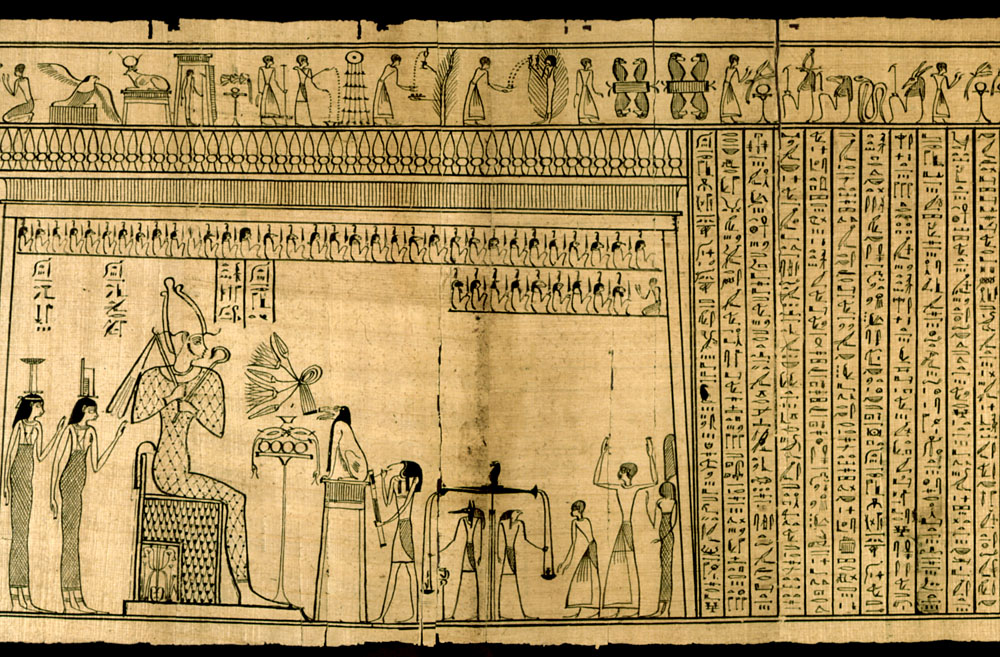During the New Kingdom the dead was buried with rolls of papyrus containing passages of “The Book of the Dead”. That meant that the artist of the Ancient Egypt applied over this new surfaces a decoration took from the general corpus of images they had.

Book of the Dead of Khonsumes. Isis and Nephthys behind Osiris.
One of the most common scenes in those papyrus was the one with Osiris resurrected over his throne and followed by the images of Isis and Nephthys. Our focus is on how these two professional mourners were depicted.

Relief with superposition from the tomb of Kagemni in Saqqara. Old Kingdom. Photo: www.osirisnet.net
The artists of Ancient Egypt drew on papyrus with the same techniques they used in other surfaces. Very usual were the superposition and the juxtaposition for depicting pairs, groups (of people, animals…), and amounts of things…. The first one consisted in drawing every single image just besides to another, this way we can see clearly all shapes; the second one consisted in making every image one over another, so just the one on first sight is completely drawn while the artist made just some contours of the rest.
In that typical ancient Egyptian scene of Isis and Nephthys behind Osiris, the artists of Ancient Egypt applied mainly the technique of juxtaposition. This way what we see is the two goddesses in the same plane and it is usually Isis who appears in the foreground as if she was preceding her sister Nephthys.
Which was the reason of depicting the two mourners of Osiris with this technique? The superposition was one of the ways the artist of Ancient Egypt had to making a pair, a group, an amount… as much complete as possible. By drawing one thing or person one besides the other, they assured that the image was not incomplete and that point was very important in sacred scenes. If an image was incomplete, it was less effective. And for the dead the effectiveness of both professional mourners was crucial.

Book of the Dead of Djed-Hor. Roman Period. Photo: Hildesheim Museum.
It was supposed that Isis and Nephthys were behind Osiris and one besides the other. However in two-dimensional art the ancient Egyptian artist depicted one in front of the other just for making both complete, so effective for the dead’s resurrection.
But…this was always like that? No the superposition was also applied to this scene..
Trackbacks/Pingbacks